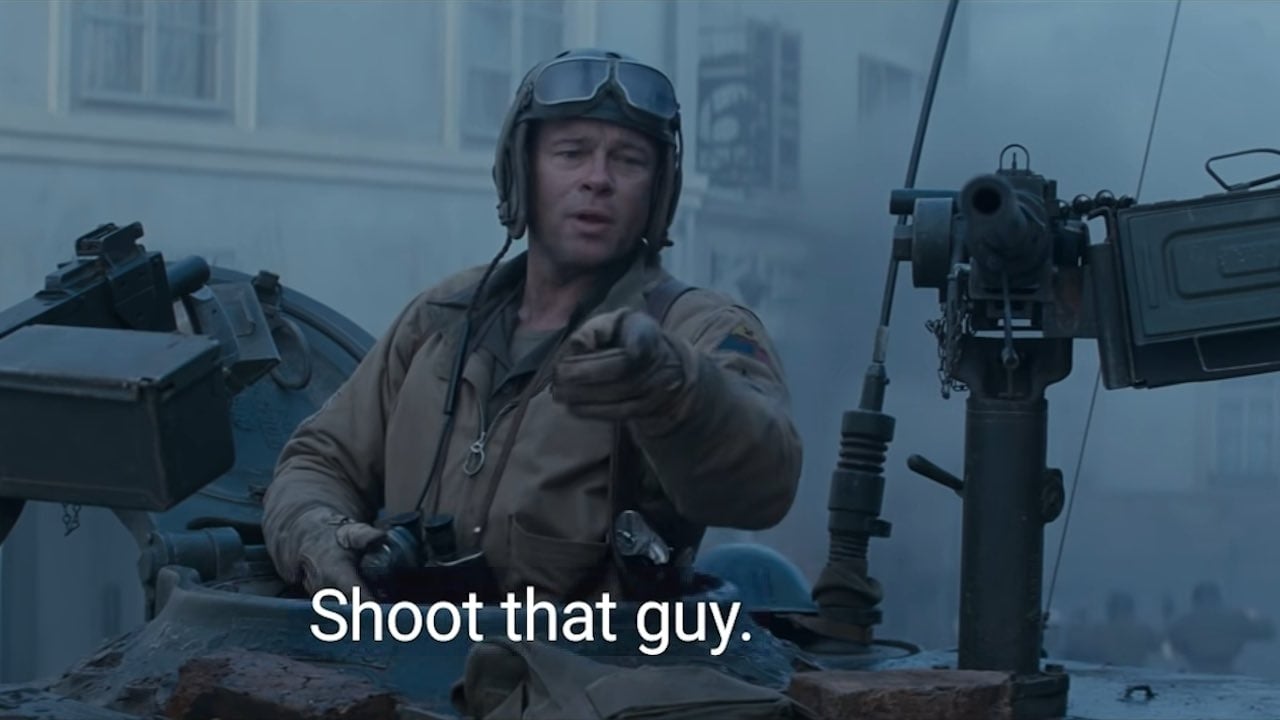I’m curious as to how quickly BG3 rule changes will start making their way into tabletop house rules and 3rd party supplements.
My guess is pretty quickly, if my own group is any worthwhile measurement.
Yeah. Larian made some really good changes to D&D, then they added crit fails to skill checks
then they added crit fails to skill checks
Do you know how many times that has pissed me off? Especially on my rogue where even a 1 would have opened the damn lock.
DC 10. You roll a natural 1, it modifies to 15. CRITICAL FAILURE
I feel like it’s a bit ridiculous. A professional with expertise doing the worst they possibly can shouldn’t be the same as any random untrained person doing the worst they can.
That is why they ditched critical failures and success in tabletop D&D.
My guess is they kept it in bg3 so there would be a chance of failure on everything including the DC 2 rolls, but to be honest I don’t think that chance of failure really adds anything to the game.
That’s why I do crit fail confirms.
Yeah, as DM I’ve always house ruled that it didn’t make sense for a character to fail at the thing they’re the best at.
Though I have been known to interpret a natural 1 as a crazy external force - like an earthquake - and have them reroll at -10.
Makes it even more fun when they succeed anyway.
I’ve always house ruled that it didn’t make sense for a character to fail at the thing they’re the best at.
House Ruled? That’s RAW. Crit Fails and successes only apply to attack rolls and death saves. And that’s how it should be.
Why are you rolling in those cases?
BG3 is a video game, no DM to say “oh the rogue with a +17 doesn’t need to roll”
It was not clear from context that it was a comment about checks in BG3. I read it as a reason why they hated similar checks at the table.
No worries, we all fail perception checks every once in a while. Or spot checks, depending on edition/game.
Yes it was.
I don’t understand what you mean. The game rolls automatically for lockpicking. If you roll a 1 it fails even if say the DC is 10 and you have +9 from expertise and various gear.
Is taking 10/taking 20 not a thing in later editions?
Edit: apparently not explicitly though the dm handbook implies you should delete players auto succeed on tasks they can retry
This comment chain is about Baldur’s Gate 3.
yeah I replied to the wrong comment my b
Are those actually “crit” fails or just auto fails?
Never bothered to check if a nat one fail is any different than a nat two fail
Just auto fail. A rogue lock picking a DC10 door still has a 1/20 chance of failing the check. That’s the difference.
Crit fails on skill checks have been houseruled into the game for ages, this is not something cooked up by Larian
[nervous sweating] I’ve always run my game with crit fail skill checks. That’s normal.
Isn’t it?
Isn’t it?
It’s the second shittiest common house rule, assuming you mean that if someone with a +15 bonus rolls a nat 1 on a DC 5 check, they automatically fail (possibly with a worse effect than if someone with a -1 rolled a 2).
On the other hand, there are other ways to have crit fails on skill checks that are much more palatable, like:
- having a slightly worse effect when someone rolls a nat 1 and would have failed anyway
- having a worse effect when someone’s total is 1 or lower
- having a worse effect when rolls are failed by certain thresholds, like by 10 or more (potentially, but not necessarily, only when the roll was a nat 1)
(The worst common house rule, btw, is crit miss tables for additional effects beyond an automatic miss when you roll a 1 on an attack roll.)
If a 1 is not a fail, why do you roll at all ? I mean if the DC is 5 and you have +15, your DM should just not make you roll (* you pass automatically). So a 1 should always be a fail.
In tabletop you shouldn’t be rolling if there is no chance of failure, although some DMs roll to see how successful the outcome is instead of just treating it as pass/fail.
The DM doesn’t necessarily have your modifiers memorized and asking what they are every time slows down play. The DM also likely doesn’t want to share the DC. The easiest fair solution is to always ask for a roll (assuming it’s possible, generically, to succeed or fail) and to then consider passes to be passes. If you only avoid asking for a roll when you know the player will make it, then you’re likely to be biased toward the players whose characters you’re more familiar with.
So a 1 should always be a fail.
RAW this is not the case. From the DMG:
Rolling a 20 or a 1 on an ability check or a saving throw doesn’t normally have any special effect. However, you can choose to take such an exceptional roll into account when adjudicating the outcome. It’s up to you to determine how this manifests in the game.
My experience with having nat 1s being auto fails and is that this results in characters who are “erratically … tragically incompetent” as well as taking away player agency (Nick Brown on rpg.stackechange explained this well). Maybe you and your players like a game like that, but I certainly don’t.
The DM doesn’t necessarily have your modifiers memorized and asking what they are every time slows down play.
Pen and paper or even a tablet exist for a reason. Having the key stats of your player characters stuck up to your GM screen or open on your second monitor is about the best use of space there is.
Besides, it doesn’t take much brain power to put together that making the rogue who’s been making short work of locks the past month roll for a simple lock under no time pressure is just silly. I get if an AL GM doesn’t know the characters but for majority of weekly groups’ GMs this is an absolute non-issue.
What portion of the
- 18 skills
- 6 saves + AC
- 30+ tools
do you list for every character on your GM screen? Are you running games with 6+ players? And what other value does that provide? Do you also account for possible bonuses, some of which can be activated as reactions? Do you update it when values change mid-session (like if a player changes shape, enters or leaves a paladin’s aura, or attunes-deattunes an item that boosts a stat)? Because if so, that sounds like a lot of bookkeeping for very little value to me, and if not, then there’s even less value. If it’s baked into your VTT then sure, but I don’t think most groups playing in person use a VTT at the table.
What are you listing on your main screen? I’d think that all of these things would be more important than duplicating the info PCs themselves have: having a copy of the map (with everything visible or with LOS / fog of war / lighting applied to the selected PC/NPC/monster), initiative (which could be swapped out for 1-2 PC stats outside of combat), players’ passive values, everyone’s HP + status effects, notes on NPC and monster motivations, reminders (e.g., tell the Fighter they find a note from an NPC in their backpack when they say they’re getting something or during downtime), notes related to what you actually have planned for the session, etc…
Noticing that the Rogue has been doing very well on thieves tools checks and thus not making them roll to pick a lock is a clear example of the possible ways DM bias can occur, since another character (let’s say a Wizard with History expertise) with a skill bonus that’s just as high that hasn’t come up as much won’t get that same benefit. On the other hand, if you don’t have auto crit fails on 1s, then you can just let the Rogue succeed without treating the Wizard unfairly - yes, they have to roll, but there’s no chance of them failing that the Rogue doesn’t have.
That all said, if you have auto crit fails on 1s, why are you not asking for rolls all the time, anyway? Seems inconsistent, as not asking for a roll from someone who will succeed on a 1 is the same (in terms of possible outcomes) as allowing a roll but waiving the chance of an automatic failure on a nat 1. Why not just get rid of that chance in all cases?
If the DM doesn’t know the stat your character has the highest in and uses all the time, they have an awful memory and shouldn’t really DM.
Some people do like crits on skill checks. Other people just like rolling dice as much as possible.
The best way I’ve seen it in game was a DM making it so a natural one that you’d succeed with anyways just means you succeed in the ugliest way possible.
Like, you picked the lock, but you cut your hand on a rough edge just enough to annoy you for the rest of the day.
You made the jump, but stumbled awkwardly on landing.
Etc etc
That’s pretty close to the way I’ve seen it done when the DM wants a 1 to be a special number and I didn’t hate it.
A slight alteration of that is to have a successful 1 result in a complication - some of which would result in the attempted task becoming impossible or irrelevant. Maybe you pick the lock but the door is stuck or barred, or maybe you’re halfway through picking the lock when an ogre slams into it, shattering it into little more than splinters. Or you pick the lock flawlessly, but the thing you were after is missing because it was already stolen. It’s crucial that it’s something that’s out of your control with regard to the task you were performing, not that you slipped up in some way to cause the failure. It’s not perfect, but I personally like it a lot more than other implementations.
Woah, crit fail tables, ain’t nobody got time for that. I like to use crit fails as an opportunity to impose a cost or hard choice on my players, both in combat and in skill checks. But then, sometimes I just have it as a no, because it’s possible to make no mistakes and still lose.
Really, though, I always just thought that that was how it worked.
Need to do the Pathfinder crit fails. Crit fail whenever you get 10 less than the DC, or roll a nat 1 and get less than the DC.
https://paizo.com/community/blog/v5748dyo5lkod?Critical-Hits-and-Critical-Failures
Yep, that’s solid! If they got rid of the bit that the designer, Mark, clarified in the comments (“If your nat 20 isn’t a critical success, it is still a success, and if your nat 1 isn’t a critical failure, it is still a failure”) then I’d be a fan. Even with that I still appreciate the extra flexibility that it adds to the design space.
If you roll a Nat 20 or Nat 1 it raises or lowers the outcome from a crit success, success, fail, or crit fail. So Nat 20 on a roll that’s still ten below the DC takes it from a crit fail to a fail. It stops a Nat 20 on an impossible task from being a success if your skill just isn’t good enough in any way. We like playing it this way cause if our bonuses are so good (reflecting high training and skill) we can auto pass certain low level checks even on a Nat 1. It still means a Nat 1 is somewhat impactful as it stops an auto crit
[Edit]: Adding an example Rogue attempts to pick a ‘complex’ lock with a low DC. Complex locks require multiple successes to actually unlock, and a crit success on a pick lock check counts as 2 successes towards opening it. Rogue has +22 to picking locks, lock DC is 10. With a roll of 1, the result is 23, which is more than 10 above the DC meaning critical success. But since its a Nat 1 it drops to success. So 5% chance of only getting 1 success towards the multiple required to open the lock. Picking a lock requires an action in combat to do this, so can add a bit more intensity if the party desperately needs to open the lock quickly. If it was outside of combat, DM would just say we unlocked it since its impossible to fail meaningfully if given enough time.
On the other end, if the a different party members bonus is +4 because they are untrained and the DC is 35, a nat 20 gives a 24 as a result which is still 10 below a success, so a crit fail. Since it was a nat 20, the result goes up from a crit fail, to just a fail meaning it mitigates the worst part of the result. And FYI, a crit fail on picking a lock breaks your lockpicks so there’s extra outcomes and narrative results gained by using the crit fail, fail, success, and crit success rules
Oh cool! That makes sense and addresses my concerns. I really like the sound of that whole system, overall.
Is what you described a house rule or RAW in PF2E?
Crit fails like that are referenced as an optional rule in the DMG, minus the Nat 1 part
The worst common house rule, btw, is crit miss tables for additional effects beyond an automatic miss when you roll a 1 on an attack roll
That’s not as bad as injury tables for going down
Are injury tables for hitting 0 HP are a common house rule? I can’t even remember the last time I read about a group using one, and I was subbed to multiple game tales groups on Reddit (including RPG Horror Stories).
If you’re trying to run a gritty game, I can understand wanting a player hitting 0 to have an impact. I don’t think injury tables work otherwise. And I don’t personally think 5e is a great system for gritty games overall. The rules for Lingering Injuries are in the DMG, though, so it’s not always even a house rule.
Crit fail and success for skill checks is a variant rule in the dmg (maybe even discussed in the PHB)
Ultimately if 1 will not fail or 20 will not succeed, why are you even rolling? While there is no default automatic success/failure rule, it’s a natural assumption that 1 and 20 are automatic fail and success based on the fact that the roll is pointless otherwise.
Tiered DC. I don’t know if 5th has that as an official rule or it’s a common house rule.
Rolling to seduce a dragon? Nat 20: he/she laughs at you, you fail. Nat 2: does a 22 hit your AC?
I don’t know if 5th has that as an official rule or it’s a common house rule.
It’s mentioned somewhere in Chapter 8 of the DMG.
As someone has mentioned, “Pass” and “Fail” are not the only possible outcomes of any given roll. That’s why there are numbers on the dice besides 1 and 20.
Also, the GM doesn’t usually(and also shouldn’t, with everything else they need to keep track of) memorize every aspect of all their players’ character sheets - they don’t necessarily KNOW if the check is impossible to pass or fail.
Well yes, but actually no. BG3 crit fail and DMG crit fail are different
What changes have they made? I’d love to know as I’m always game to allow homebrew etc at my table (so long as I’ve read the material, everyone agrees, and we roll with it from the start of a campaign).
Off the top of my head:
Changes fall into two categories:
- Rule Tweaks
- New mini-systems.
Under 1:
- Shove is not a part of the attack action. It is a bonus action available to all characters. Shove only pushes the target back an amount that depends on the shover’s strength and the target’s weight. It normally does not knock them prone unless they are shoved off a high ledge.
- Weapons are given unique weapon action attacks depending on the weapon type. These can be used once per short rest only if the wielder is proficient with the weapon.
- Removed the requirement that attacks must be made using Strength to activate the benefits of Rage.
- Removed the requirement that attacks must be made using Strength to activate the benefits of Reckless Attack.
- Fast Hands simply gives you an additional Bonus Action with no restrictions.
- Haste simple gives you an additional Action with no restrictions
- Consuming a potion is only a bonus action.
- If a creature throws a healing potion as an action, it will break and heal all targets in a small radius.
Under 2:
Numerous weapons and items have systems attached to them that create or consumes various “charges” to add additional effects
As an example, weapons and items with the “spark” ability builds Lightning Charges in the wielder when certain criteria are fulfilled.
If 5 Lightning Charges are built up, the next instance of damage done with an attack role inflicts an additional 1d8 Lightning Damage.
Thank you so much for this. These sounds like really reasonable tweaks and additions that I’d love to run a game with them!
I love this changes and I really going to struggle to back to martial in 5e without them.
No more I swing my sword end turn.
Instead I use my Lacerate skill and hit with my sword. Then I use my bonus action to shove.
Bonus action shove is so good, it lets you try shoving people off of edges or into environmental hazards instead of just whacking turn after turn. Also great for spellcasters and ranged attackers, but you need to roll for it so it’s not too overpowered. Bonus action potion drinking is also really nice.
People on the same turn sharing initiative can go at the same time. Drinking a potion is a bonus action. Those are the ones I’ve incorporated.
It makes much sense and avoids action spamming I’ve seen at tables that let a potion be used for free. I know Crawford intended potions to be an action since they’re “bottled spells” but it results in players never using them in fights. Also less squishy PCs makes for far for entertaining encounter design (read that as additional peril haha).
“bottled spells”
“Bottled spells” that don’t recharge on a long rest but instead cost an arm and a leg and heal for a pittance, basically ensuring that in the time that it takes to gulp one down you’ve already taken twice as much damage than what it’ll heal. I guess I get the idea but RAW, the potions are just awful outside of last resort to bring up downed characters (and that’s assuming your GM has no problems making an unconscious character forcibly drink them).
You make a real good point. The movers cost plus lack of recharge already seems balance enough for it to be bonus action worthy. Honestly, it just means encounters can be either more frequent, dynamic, or epic. Not to mention a nice way to balance players’ wallets.
There are quite a few, but a simple one that I’ve put into my own house rules is giving all Clerics proficiency with flails and morningstars.
I love this. I can’t remember the last time a player used one of those two.
Flails are just objectively worse than warhammers. Same damage die, but lacking the Versatile trait. I’ve played with giving flails some other sort of secondary ability but never found something that works.
Morningstars are functionally the same as warpicks, and both lack the Versatile trait. I’ve settled on changing the morningstar’s damage to 2d4 split between 1d4 bludgeoning and 1d4 piercing to set it apart.
I really wish they went over the weapons for the next edition and made sure that at the very least there were no weapons that were objectively worse than another. Might want to just homogenize the weapons under some handful of archetypes that have some legitimate advantages over each other.
I once played a cleric worshipping Loviatar so thematically I made him use whips as his weapon of choice. Roleplay-wise I loved it, gameplay-wise 1d4 damage is ass and reach allowing me to mostly harmlessly tickle the enemies from very slightly farther away is absolutely useless 99% of the time.
The weapon system in 5e is half-baked. It feels like someone put it in as a placeholder and never bothered to give it a second look.
Does BG3 do anything with overlapping extra attack features?
Regular Extra Attack and Pact of the Blade’s extra attack stacks in BG3 IIRC
As a mainline Pallylock I enjoy that, probably a bit too much.
Not that I’m aware of.
It sounds like an interesting change, though.
I’m pretty pressed for time, but it would be interesting to do some testing on this.
meanwhile in legally distinct dragon game: Hmm yes I will dip fighter for access to a lv 4 reaction strike on every single character i make.
Also in legally distinct dragon game: Watch in amazement as I use my staff/dagger/rapier as a shield!
Dont forget the dip in fighter in 5th that allows you to use action surge on a caster. So good its banned at the table I play at
Back in my day we got an extra attack at 6th, 11th, and 16th level, and each one was at a cumulative -5 penalty, AND WE LIKED IT!
I’m still living in those days.
I would be, but one of our friends has decided that 5e is the only system he wants to play, and we all love him too much to play without him. We don’t hate 5e, we just don’t love it.
My friends are afraid of Pathfinder character creation because there are too many options (especially feats,) but I drag them through it anyways.
Ironically he hates playing it because of all the extra rules, but loves creating characters because of all the extra rules. Writing that out I think I just realized if I take out BAB progression and replace it with proficiency bonuses and have multi attack rules just be 5e rules I think all his issues would evaporate.
Paths do not find this.
Yeah, without some third party/house rules, multiclassing casters is already bad for your casting, but then also harms your BAB even more than it normally is, whereas multiclassing full martials has few downsides.
TBF the only class that gets more than one extra attack is the fighter.
Now of course it would make sense to sum up the levels you have in classes that get multiattack, and if you have >=5, you get an extra attack. But since attack progression is far less regular than spell slot progression, getting something approaching regularity beyond that would be difficult.
Now if OneD&D wanted to boost martials and introduce some sort of a multiattack scaling across multiclassing, here is how that could work:
- Introduce features called Special Attack and Signature Attack. (Simply because just stacking extra attacks in a way that gives a bunch of half-casters extra attack at level 5-6 would give full martials a ridiculous number of attacks per turn at higher levels.) Special Attack is an attack that deals double weapon damage (which stacks with crits), but other extra damage sources like smites don’t get doubled. Signature Attack is a Special Attack that can also force a save, either a STR save vs. being disarmed, a DEX save vs. being knocked prone, or a CON save vs. being dazed. You pick which one when you get the feature, and you can change it on level up.
- Introduce an attack progression table which details how many regular and special attacks you get per warrior level. (IDK if Lemmy’s MD syntax allows tables in lists, so see the table below.)
- Like for spell slots, some classes (fighter, barbarian, monk) count as whole classes, others (paladin, ranger, artificer) count as half, and some caster subclasses (bladesinger, swords bard, hexblade, etc…) count as third.
The table:
Warrior Level Normal attack Special attack Signature Attack 0 1 - - 3 2 - - 6 1 1 - 9 2 1 - 12 1 1 1 15 2 1 1 18 1 2 1 So:
- A level 12 single class fighter gets 1 normal, 1 special, and 1 signature attacks.
- So does a fighter 6 / barbarian 6.
- A level 12 paladin counts as a level 6 warrior so they get a normal and a special attack. (Also, in OneD&D the divine smite is a bonus action spell like every other smite, so the level 18 paladin can’t go too nuclear with 3 smites per turn.)
- A fighter 6 / paladin 6 counts as a level 9 warrior, 2 normal attacks and 1 special attack.
Of course this could be refined a bit further, e.g., instead of a generic “special attack” they could pick power attack (must be a strength-based attack), precise strike (must be a dexterity-based melee attack), or pinpoint shot (must be a dexterity-based ranged attack) and they could swap this one on level-ups too. But I think this should be a start.
TBF the only class that gets more than one extra attack is the fighter.
That’s true, but other martial classes either get or already have features that increase the base damage of their attacks somehow, usually by or around 11th level, in order to roughly keep damage parity (granted, it’s a stretch in actual play, but it’s possible to see the workings - Barbarian has rage damage/reckless attack/brutal critical, monk has martial arts/fob/damage die increase to d8, Rogue has sneak attack, ranger has Favored Foe, paladin has smites, etc.)
The problem is, extra attack does not stack with itself, so a 5/5 martial has at least one dead level if both classes get it. That’s not true of a 5/5 in two full spellcaster classes (excluding pact magic,) who in addition to getting higher circle spell slots from both classes, have access to 3rd level spells from each of those classes.
It bothers me a little because this was solved in 3.0 with BAB - you added the maximum bonus from each class, and you would get a number of attacks according to the multiples of 5.
Not going to lie, I’m already taking notes. I like that in general, if you make the right choices, it’s easy to make even wizards feel a lot less squishy, which would make me feel a lot more comfortable not pulling punches in my game. One of my favorite changes so far is the wild shape recharge on short rest for druids.
It’s gotten me thinking about how to fix some other broken classes again, like making Ranger not fucking suck, and fixing the MADness of Barbarian. Fight me IRL, having the Barb’s unarmored defense dependent on dex instead of strength is dumb as hell when the barbarian is clearly a STR/CON class, that would be like having the Monk’s unarmored defense being dependent on Constitution. “So, what, Barbarians should just deflect attacks by flexing extra hard?” Yes.
Didn’t druid already get wildshape on a short rest? I do agree that barbarian Unarmored Defense is a bit lackluster though.
I get what they were thinking. Monk gets to add Wisdom because their awareness let’s them dodge, so it should be roughly equivalent to let a barbarian add Constitution because their natural durability makes them harder to hurt. Dexterity being one of the main Ability Scores for monks throws this out the window though
IIRC, Druid only gets two wild shapes per long rest, but it’s possible I’m misremembering because my druid player basically forgot she could do that and it’s been ages since I played one myself.
Druids get two Wildshapes per short rest. Players just tend to not take short rests because they’re not really incentivized. I know this because I read through the druid features more than my druid player did
Ohhhhhhhhhhh, yeah, okay. Neither myself (when I play) nor my players take short rests. Death before short rests, for some reason.
Ummm… Barbarian Unarmored Defense is based off Con, not Dex. They just didn’t take away the default Dex bonus to AC that every class in the game gets. They shrug off damage by having a high Con. Barbarians are pretty good as it is, if you let them completely dump Dex and give AC from Str, they would be broken AF… 18 AC at level 1 with a shield under point buy system, and immediate jump to 20 AC at level 4, with no reduction in damage output at all. Possible to be 20 AC at level 1 literally completely naked (no shield) with rolled stats, and 18 isn’t even entirely unlikely…
The reason that it’s broken (in a bad way) as Dex+Con compared to the Monk’s Dex+Wis unarmored defense is that monks absolutely CAN get broken as fuck AC from Dex + Wis, especially as the game goes on. Kinda on a related note, in BG3 I re-specified Astarion as a thief/monk, gave him a few mid-tier magic items, and now he’s my front-line tank with an AC of 21 at level 7. No sane Barbarian PC is going dex barb, so realistically the barbarian’s unarmored defense is going to cap out at AC 15-16 minus shield (which, come on, what barbarian won’t be rocking two handed weapons?). So, while the Monk gets unarmored defense based on both of its chief stats, Barbarian gets unarmored defense based on just one of its chief stats.
Having a barbarian with a broken AC to start with doesn’t bother me too much, but then I also tend to not run gritty/from dark style games, and that’s also bearing in mind that the martial classes don’t really scale as well as the casters do after level five. Giving the barbarian a ludicrous AC to aspire to at high levels might help balance that out.
You are talking about removing Dex bonus to AC, which every class gets, to make Barbarian able to completely dump 4 ability scores and not even need items (at least a fighter needs nearly 1k gold to get into heavy armor that will compete with this barbarian completely naked). Barbarian is not broken in a bad way currently compared to any other martial. A monk might keep up with AC, and maybe even damage output (but I’d argue being locked into monk weapons means they won’t) but they’ll have at best 60% of the HP a barbarian has (who is also taking half damage from non-magical sources a majority of the time) and still have to put points into 3 stats to stay relevant.
Also, BG3 is not a great source for comparison… I have a bard at level 5 with a 21 AC. The more “tanky” classes I have played were all around 23 AC at level 7. There are a lot of magic items in the game that stack AC and you are absolutely swimming in them by level 8. Every party I’ve played through by the end game it was 4 characters with 23-26 AC across the board. My wizard was 24 AC (25 if standing in low light) by level 10…
You’re aware that barbs get resistance to bludgeoning, slashing and piercing irregardless of whether it’s magical, right? And that extends further with the bear totem
Yea, I meant to refer specifically to spell damage but wasn’t very clear. But that furthers my original point anyway.
Monks still require to have Con to be viable.
While a Barb wouldn’t require to have Dex in any way.
All classes are designed to have the need of at least 3 stats.
What could go wrong if a class with the most hp and that halves the incoming damage also had extreme AC naked?
They are supposed to be a tank.
That said, Barbs shouldn’t have that high an AC since their rage requires them to either attack or get damage. So a high AC would force them to only attack or lose their rage.
I usually offer players with multiple instances of extra attack a +1 to their to hit, and Im considering offering +1 crit range as well. This is a real sticking point to me in 5e, the lack of viable build variety.
Im considering offering +1 crit range as well.
Champion fighters in shambles right now
I mean, their +1 would stack. Crit range expansion was a big part of the game in 3.x. That game had you crit confirmation, and 5e makes it easy to get advantage, but I literally do not care.
Champion is also a badly designed class, it could have had maneuvers for a teensy bit of complexity, but they needed a “newb” subclass, paving the way for conceptually elemental subclasses with no mechanical complexity at all (note that the wizard didn’t get hit with any of this).
in dnd 5e
Can you elaborate? I really only have experience with 5e
Martial hybrids are fun and good in other systems. In D&D 3e, for example, its the complete opposite situation; martials can pick up cool tricks like dual wielding while progressing their accuracy and health, whereas casters lose a level of spell progression and gain a second track of spell progression thats about as strong as a lv 1 character
Tbf, in 3.5 casters learned the same spells at different levels so they weren’t exactly compatible. Martial classes mostly relied on feat picks and BAB (for extra attacks) while their individual features weren’t really shared by other classes
deleted by creator
Just saying, the cantrip gets more powerful but you just get one. I would prefer smaller cantrips but more of them like eldritch blast. So more sword swing is decent
@Golett03 hot take: cantrips ruined spellcasting. Spells should take spell slots unless they are a ritual or granted by a magic item. If I could go back in time and make cantrips not a thing, I would
Hot take: cantrips are fun and give new players exciting stuff to do and there’s absolutely nothing even remotely fun at all about keeping track of how many casts you have.
I think some very basic things, like prestidigitation, are fine. Basically magical effects that a child might do by accident but controlled through experience. Damaging spells? Probably not. Essentially, if it adds flavor to knowing how to manipulate magic, fine. If it grants power, it’s probably not a good contrip.
@Cethin pretty much every centripetal worth taking either deals damage, give combat advantages, or has a very useful effect like Light.
Essentially my hot take is that even Prestidigitation and Light should be a 1st level spell. Especially Light.
Totally agree light and damage spells should be.
Prestidigitation like effects I think are probably actually good to just let every spell caster (or at least wizards and probably sorcerers and warlocks) have. Things that don’t do anything critical, just give flavor that they understand how to control the weave. Just like a fighter probably has better control of their body and can do extra flourishes, a spellcaster can do minor flourishes of the weave. Prestidigitation might still be more powerful than what I have in mind even, but the idea is about right. Basically they’re able to create sparks, budge things, create a tiny bit of wind, or other very minor effects without expending much energy. Nothing actually useful to do anything except to say they can do things.
Spellcaster doesn’t get spell of higher level in this case, only spellslot. A martial still get the proficiency up.
Casters also get proficiency up, that depends on total character level.
And higher spell slot levels still increase the character’s damage output and specific utility. Some spells - such as Cure Wounds or Hold Person - are pretty much designed to be upcast, and some others (e.g. Heat Metal) are unexpectedly great. Someone with Bard 3 / Sorcerer 4 might only have second level spells, but a level 4 Heat Metal vs. a heavily-armored target deals 4d8 per turn without a saving throw for up to 10 turns.
In the case of heat metal the better effect is the disadvantage it gives to the victim. 4d8 is not much. A lvl5 martial does this with a rusty one handed weapon, without a spell slot, two less levels, and I resource whatsoever.
And then most lvl4 spells are much more powerful or much more useful.
Multiclassing before lvl5 is usually a bad idea. You can twist the problem how you like, that’s how the game is designed.
Take a paladin 4/fithter 3, and any smite will do much, much more than your heat metal. A champion 3/berzerker 4 (you must be really stupid to do that) will still do much, much more than your heat metal. And he will be able to do it as many time as you will.
Read the spell description.
Sure, 4d8 in itself is not much, of course. 4d8 per round as a bonus action for 10 rounds with a single spell slot, however, is a lot, especially at a level where a paladin only has second level smite slots. Which is why upcasting heat metal can be extremely powerful. (And it gives disadvantage for those 10 rounds, and there’s no saving throw or attack roll involved. If you’re wearing metal armor, it will fuck you up. And if you happen to be resistant or immune to fire, well, that bard 3 / sorc 4 might have transmuted spell.)
I know the spell. I told you. Two attacks with a longsword from one hand will do more damage than that. I’m talking about a bland longsword and no ability whatsoever on top.
On average, an ability modifier of +4 is about a d8, and +5 is about a d10. 2 longsword attacks make 4d8. 2 2hander attacks make about 5d8. That’s without any resource invested.
You’re telling me that your awesome spell requires a lvl4 spell slot that you have 2 in the day to do less than any lvl5 martial would do without expanding any resources. And you need your enemy specifically to wear a metal armor, or your spell does about nothing.
I know the spell. I told you. Two attacks with a longsword from one hand will do more damage than that.
4d8 for ten turns is on average 180 damage. For one bonus action, total. Two one-handed longsword attacks even at +5 assuming you never miss is 19 damage average. If they want to keep doing that they will have to expend their action every single turn. I have no clue why you assume the wizard is going to just take a coffee break after applying heat metal instead of using their actions to deal further damage every turn it’s active. The wizard wins out massively.
I have no idea what you’re smoking but I want some too.
(Minor correction, wizards have no access to heat metal. It’s only available to druids, rangers, and bards. But at level 7 wizards have access to Conjure Minor Elementals, which can summon 4 magma mephits and they each have one daily casting of heat metal.)
Yep. While the bard-sorcerer maintains that level 4 heat metal, they can also do 2d10/turn with fire bolts if they don’t want to expend additional spell slots. Also assuming that all of those hit, that’s 110 additional damage beyond the 180 from the heat metal.
If your enemy lives through 10 turns under heat metal you’re not really fighting it… Your assumptions are so delusional it’s hilarious.
4d8 + cantrip, other spell or even melee attack every turn is still considerably more damage than 1d8+5 per turn, whether they do that for one, two, three, …, or ten turns. We are comparing damage per turn, the number of turns is irrelevant.
At this point you have yet to make one cogent claim on the subject so I’m going to assume you’re trolling on purpose and will not engage you further. Have a good day, sir.
You don’t run out of attacks in a day, martials. Kindly fuck off. :P
This message brought to you by the “magic should be powerful” gang.
Cantrips. Which also get more powerful based on character level.
As a cleric, you get two. One of which you literally have to be in someone’s face, and the other is a d8 damage pool.
You’re forgetting Toll the dead. Long range, WIS save, d12 if the target is missing even a single HP. (Sacred flame is crap though.)
I honestly forget that spell exists. I always flip past it in my spell book thinking it’s a other debuff.
Magic should be powerful, yes, but non-magic users should be able to function.














